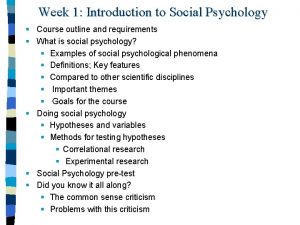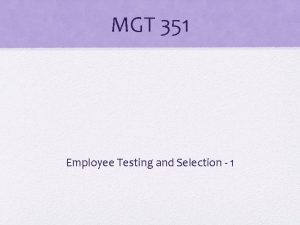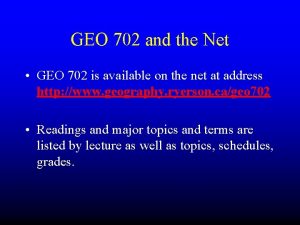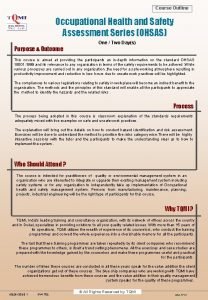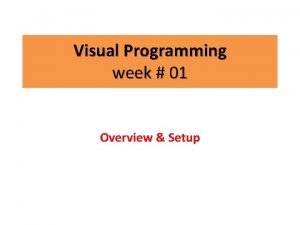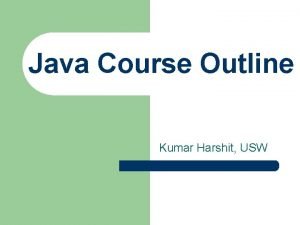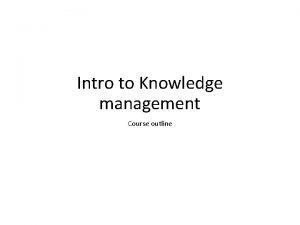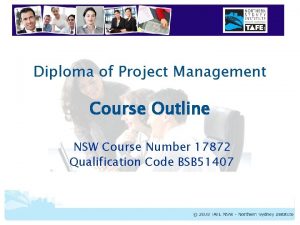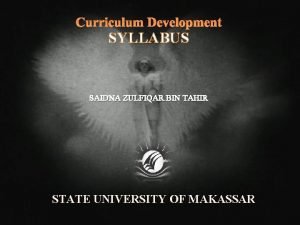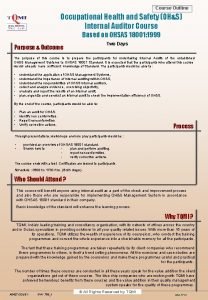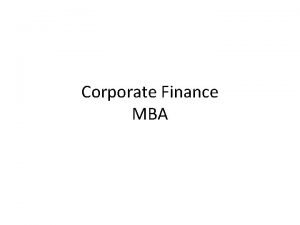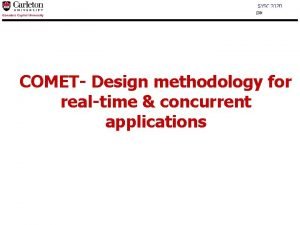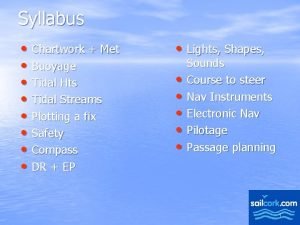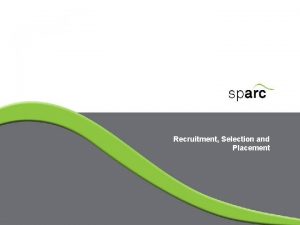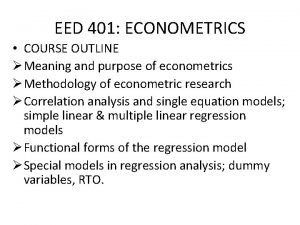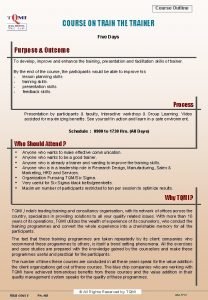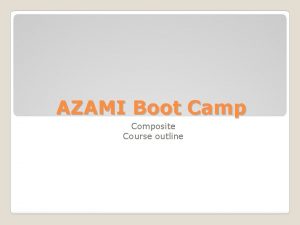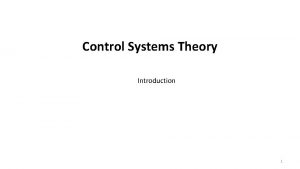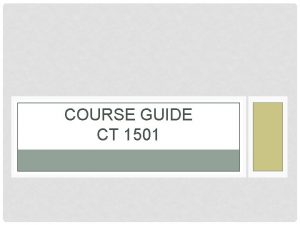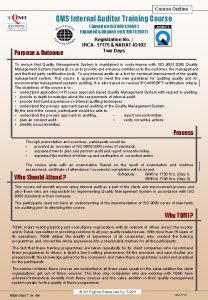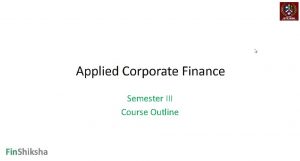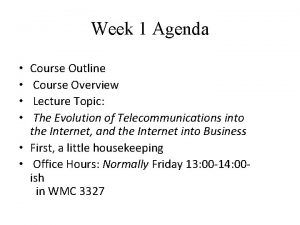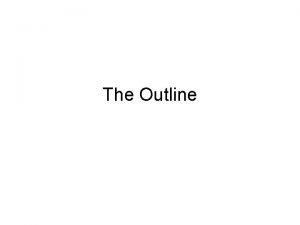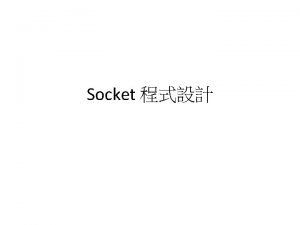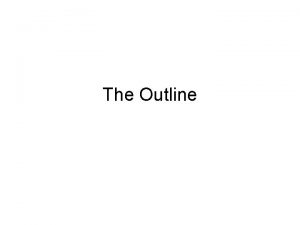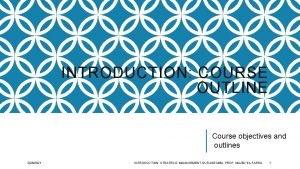Course Outline WEEK 1 Introduction to Course WEEK




















- Slides: 20

Course Outline • WEEK 1. Introduction to Course • WEEK 2. Quality Concepts • WEEK 3. Total Quality Management, Philosophy and Principles • WEEK 4. Quality Gurus: Their Philosophies, principles and methods • WEEK 5. Focusing on Customers • WEEK 6. Techniques in Total Quality Management

Course Outline • WEEK 7. Managing Human Resources In a Total Quality Environment • WEEK 8. MIDTERM • WEEK 9. Building and Sustaining Total Quality • WEEK 10. Total Quality in Hospitality Sector • WEEK 11. Benchmarking • WEEK 12. ISO • WEEK 13, 14 ORAL PRESENTATIONS • WEEK 15 FINAL

TOTAL QUALITY MANAGEMENT • The leading trend in competition within the market was by having effective cost management strategies up to the 1970’s. However, after the 70’s, this has left its place to the fast growing trend of Total Quality Management.

TOTAL QUALITY MANAGEMENT • TOTAL - stands for the inclusion of all areas of the business and all staff. . . Principle of staff briefing • QUALITY - stands for the consistent gearing of all activities to the quality requirements of internal and external customers/guests. . . Principle of guest-led action • MANAGEMENT - stands for the responsibility of the top management as regards systematic quality development and assurance. . . . Principle of management

. Integrates all functions and processes within an organization to improve the quality of goods and services. . People-focused management system. Focuses on increasing customer satisfaction and reducing costs. . Stresses learning from and adaptation to change. Based on the scientific method

Advantages of TQM • TQM offers firms several advantages such as having less bureacratic work environment, more flexibility, opportunity of working in groups, freedom of speech and thoughts, creating an environment within complaints, being customer oriented, implication of continuous development and education, realizing the importance of the staff and an environment where responsibilities are greater. Staff within the firm are seen as inside customers and motivation through this.

Like any other industry, TQM is very important for the tourism industry and the outcomes are highly visible. Tourism ind. based on service and the employes within this industry must be highly skilled and educated. If these 2 requirements are fullfilled, customer

TQM can be seen as a sort of a philosophy. It aims for greater level of service commintment and satisfying customers within a democratic and visible management strategy.

QUALITY Quality is meeting or exceeding customer expectations.

Modern Importance of Quality “The first job we have is to turn out quality merchandise that consumers will buy and keep on buying. If we produce it efficiently and economically, we will earn a profit, in which you will share. ” - William Cooper Procter

Quality Assurance are methods to ensure costumer quality.

History of Quality Assurance • Skilled craftsmanship during Middle Ages • Interchangeable parts (H. Le Blanc, T. Jefferson & E. Whitney) • Early 20 th Century: scientific management (Taylor), Henry Ford, Bell System (Western Electric) (Hawthorne Effect, statistical methods (Walter Shewhart, Deming, Harold Dodge, etc. ))

• Quality control during World War II: MIL-STD.

History of Quality Assurance • Post-war Japan: evolution of quality management • Kaizen: Continuous improvement • Deming Prize

History of Quality Assurance • Quality awareness in U. S. manufacturing industry during 1980 s: from “Little Q” to “Big Q” - Total Quality Management • Malcolm Baldrige National Quality Award (1987)

History of Quality Assurance • European Foundation for Quality Management: • European Quality Award • ISO 9000 standard • Turkish Quality: • Turkish Center for Quality (Kal. Der) (www. kalder. org)

History of Quality Assurance • Emergence of quality management in service industries, government, health care, and education • Evolution of Six Sigma • Current and future challenges: • “A race without a finish line. ” –David Kearns, Xerox.

Contemporary Influences on Quality • • Partnering Learning systems Adaptability and speed of change Environmental sustainability Globalization Knowledge focus Customization and differentiation Shifting demographics

Definitions of Quality • Transcendent definition: excellence • Product-based definition: product attributes/capabilities • User-based definition: fitness for intended use • Value-based definition: quality vs. price • Manufacturing-based definition: conformance to specifications

Customer-Driven Quality • “Meeting or exceeding customer expectations” • Customers can be. . . – Consumers – External customers – Internal customers
 Introduction to software engineering course outline
Introduction to software engineering course outline Week by week plans for documenting children's development
Week by week plans for documenting children's development Example of quote sandwich
Example of quote sandwich Social psychology class
Social psychology class Mgt 351 nsu course outline
Mgt 351 nsu course outline Geo702
Geo702 Occupational health and safety assessment series
Occupational health and safety assessment series Visual programming course outline
Visual programming course outline Parallel and distributed computing syllabus
Parallel and distributed computing syllabus Java course outline
Java course outline Knowledge management course outline
Knowledge management course outline Bsb51407
Bsb51407 Product-oriented syllabus
Product-oriented syllabus Occupational health and safety course outline
Occupational health and safety course outline Nisan langberg
Nisan langberg Phys1160 course outline
Phys1160 course outline Sysc 3120
Sysc 3120 Hts course outline
Hts course outline Recruitment selection and placement process
Recruitment selection and placement process Course outline meaning
Course outline meaning Train the trainer training program outline
Train the trainer training program outline



